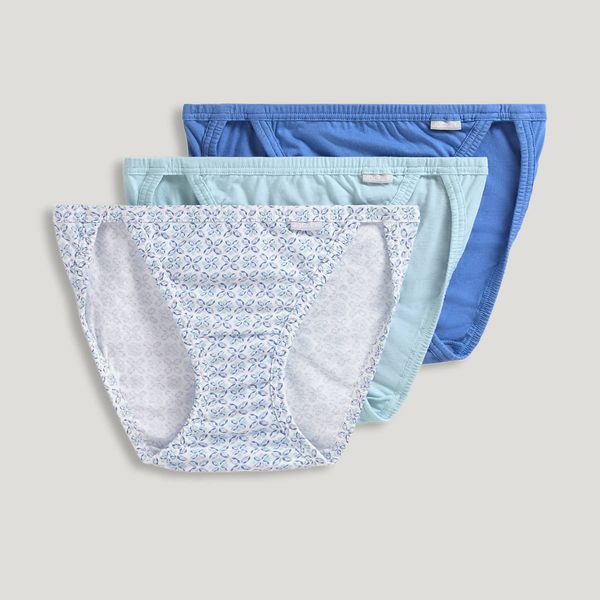
As with mattresses, pillows don’t have a hard-and-fast expiration date, so the only truly honest answer for when to replace them is a resounding “It depends.” The basic rule of thumb — and what I’ve heard over and over from experts — is to replace your pillows every two years, especially if you have asthma, a dust-mite allergy, or sensitive skin. But a well-maintained pillow can certainly last longer if it’s still supportive enough that you aren’t waking up with aches and pains. Whether it has been two years or not, here are the main things to consider before buying a new pillow.
Above all, make sure your pillow is supporting your head and neck
Beyond comfort, the main reason for sleeping with a pillow at all is to keep your head and neck in a neutral alignment with your spine. And because you sleep on it for hours every night, your pillow will inevitably wear out over time. If you’re dealing with any kind of neck pain, it may be a sign that your pillow isn’t doing its job, especially if it has gotten too flat or compressed after years of use, says chiropractor Dr. Jordan Duncan.
To test the supportiveness of your pillow, you can try what Dr. Joshua Tal, a psychologist who specializes in sleep disorders, calls the “shoe test,” which was created by Dr. Michael Breus, a clinical psychologist and founder of the Sleep Doctor wellness company. “What you do is you fold your pillow in half, put a shoe on the back side of the pillow, and then let go of the pillow,” explains Tal. “If the pillow folds back into shape and flings the shoe off of it, you’re good. If it doesn’t, it’s kind of lost its ability to hold your head up properly.” (Be sure to use a substantial shoe and not, say, a flip-flop.)
Tal also mentioned another test he uses with his patients: “I advise clients to stand up against the wall as if you were sleeping — so a back sleeper would stand with their back to the wall; a side sleeper would stand with their side to the wall — and then rest your head on the wall and notice how far it has to move to do that,” he says. “Then put your pillow in between where you’re resting your head and see if you’re standing up straight. That’s the key: You should be standing up straight if you have a good pillow.”
If your pillow looks or feels very lumpy — a possibility for down, down-alternative, or shredded-foam pillows — that may also be a sign it’s losing some of its structural integrity.
Pillows can get pretty gross over time
Because you’re essentially smashing your face and hair into them every night, and because they’re not always washing machine–friendly, pillows tend to need replacing more often than other bedding, solely from a hygiene perspective. The main concerns are asthma, allergies, and skin: According to Melanie Carver, chief mission officer of the Asthma and Allergy Foundation of America (AAFA), the fabric of a pillow is permeable to dust mites, and after two years of use, your pillow can be 10 percent dead dust mites and their droppings. Icky, yes, as well as particularly bad for people with dust-mite allergies. Other potential allergy triggers like pet dander and mold can also be absorbed by your pillow and cause symptoms to flare. If you have asthma, allergens in your pillow can make your symptoms worse.
Pillows can also trap dirt, oil, and dead skin cells, and according to board-certified dermatologist Dr. Annie Chiu, all of these can be irritants for your skin — even if you are diligently washing your pillowcase. Chiu explains that a pillowcase won’t act as a complete barrier, so irritants in your pillow can still cause trouble, especially if you have sensitive skin or persistent acne.
Yellowing or stains can be an indicator that your pillow has absorbed lots of moisture — from sweat, drool, skin-care or hair-care products, or going to sleep with wet hair — and needs to be replaced.
How important is the “every two years” rule, really?
If you’re balking at the idea of replacing your pillow every two years, you’re not alone. Two years is what AAFA officially recommends — and just about every expert I spoke to echoed it. But my own informal polling of friends and colleagues and a deep dive into Reddit discussions on how often to replace pillows suggest many people aren’t replacing their pillows as frequently as every two years, no matter what the experts say. Ultimately, while you may need to replace basic fiber pillows even sooner than two years because they may flatten more quickly, pillows made of sturdier materials can last much longer. You should mainly be mindful of whether issues like asthma, allergies, or neck pain are getting worse the longer you have your pillow.
Keeping your pillow as clean as possible will help it last as long as possible
Carver told me that washing your pillow once a month in hot water (130 degrees Fahrenheit) can help remove allergens like dust mites. However, this advice only really applies to pillows that are totally washable — and in my experience, the majority of them are not. Synthetic-fill down-alternative pillows and down pillows are the most likely to be washing machine–friendly, so if you have allergies or asthma and want to follow Carver’s guidance, you may want to seek out those fill types.
Most memory-foam and latex pillows have only a washable cover since the foam itself usually cannot be washed. And a 2013 paper from the American Academy of Allergy, Asthma & Immunology (AAAAI) found that foam pillows are just as susceptible to dust mites as feather pillows, so it’s still important to wash your pillow covers regularly. Memory-foam pillows are often recommended as allergy-safe since the foam itself isn’t a food source to dust mites the way natural materials like feathers are, but like other types of synthetic pillows, foam can still collect your dead skin, which feeds the mites.
You can sometimes clean memory foam by sprinkling it with baking soda and vacuuming it, as recommended by cleaning expert Jolie Kerr, to help remove dust mites or dead-skin buildup. And while some experts (including Kerr) say it’s possible to clean memory foam in water as long as you hand-wash it, I have attempted this and forewarn you that it will take a long time for the foam to dry. (This means you may be risking mold or mildew, so proceed with caution and make sure you’ve got a well-ventilated space and a fan to speed up the process.) For latex pillows, you can follow a similar process as with memory foam. Latex manufacturer Turmerry recommends vacuuming the latex and then spot-cleaning with a damp cloth and mild detergent.
Consider a pillow protector
In addition to cleaning, Carver also recommends using an Asthma & Allergy Friendly–certified pillow protector to keep out dust mites and other allergens in the first place — they’re like mattress protectors for your pillow that go around the pillow before you add your actual pillowcase. But even with these precautions, AAFA still recommends replacing your pillow every two years.
Additional reporting by Hilary Reid and Chloe Anello.
The Strategist is designed to surface useful, expert recommendations for things to buy across the vast e-commerce landscape. Every product is independently selected by our team of editors, whom you can read about here. We update links when possible, but note that deals can expire and all prices are subject to change.





